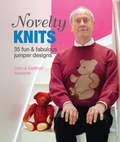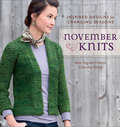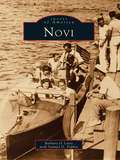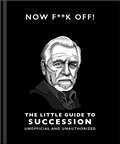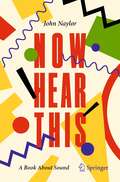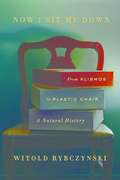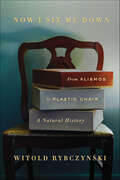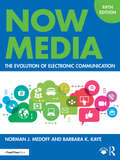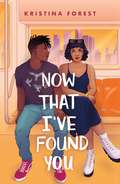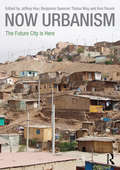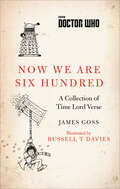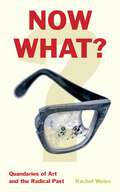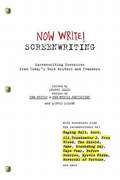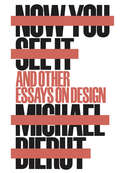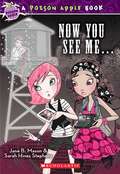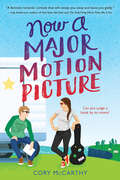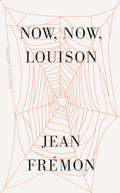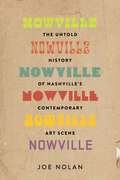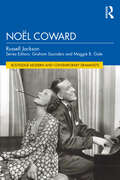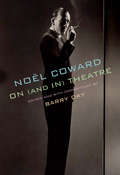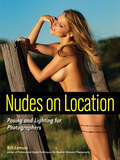- Table View
- List View
Novel Motion Anchoring Strategies for Wavelet-based Highly Scalable Video Compression
by Dominic RüfenachtA key element of any modern video codec is the efficient exploitation of temporal redundancy via motion-compensated prediction. In this book, a novel paradigm of representing and employing motion information in a video compression system is described that has several advantages over existing approaches. Traditionally, motion is estimated, modelled, and coded as a vector field at the target frame it predicts. While this “prediction-centric” approach is convenient, the fact that the motion is “attached” to a specific target frame implies that it cannot easily be re-purposed to predict or synthesize other frames, which severely hampers temporal scalability. In light of this, the present book explores the possibility of anchoring motion at reference frames instead. Key to the success of the proposed “reference-based” anchoring schemes is high quality motion inference, which is enabled by the use of a more “physical” motion representation than the traditionally employed “block” motion fields. The resulting compression system can support computationally efficient, high-quality temporal motion inference, which requires half as many coded motion fields as conventional codecs. Furthermore, “features” beyond compressibility — including high scalability, accessibility, and “intrinsic” framerate upsampling — can be seamlessly supported. These features are becoming ever more relevant as the way video is consumed continues shifting from the traditional broadcast scenario to interactive browsing of video content over heterogeneous networks.This book is of interest to researchers and professionals working in multimedia signal processing, in particular those who are interested in next-generation video compression. Two comprehensive background chapters on scalable video compression and temporal frame interpolation make the book accessible for students and newcomers to the field.
Novelty Knits: 35 Fun And Fabulous Jumper Designs
by Gyles Brandreth Saethryd BrandrethNovelty jumpers are firmly back in fashion and hugely popular on the high street. Now you can make your own - give them to friends and family, or just keep them for yourself. With jumpers for everyone and for every occasion, Novelty Knits is the perfect book for people looking to make something more personal. As well as a festive snowman, Christmas tree, skeleton, ghost, love birds and heart, there are His & Her 'tuxedos' and a robot, as well as patterns for animal lovers, including cats, dogs, pigs and a teddy bear, and enthusiasts, including golfers, musicians, Formula 1 and steam train fans. So whether you want something elegant, outrageous, extrovert or just a little bit different, there is bound to be a pattern designed for you.
Novelty Knits: 35 fun & fabulous jumpers
by Gyles Brandreth Saethryd BrandrethNovelty jumpers are firmly back in fashion and hugely popular on the high street. Now you can make your own - give them to friends and family, or just keep them for yourself. With jumpers for everyone and for every occasion, Novelty Knits is the perfect book for people looking to make something more personal. As well as a festive snowman, Christmas tree, skeleton, ghost, love birds and heart, there are His & Her 'tuxedos' and a robot, as well as patterns for animal lovers, including cats, dogs, pigs and a teddy bear, and enthusiasts, including golfers, musicians, Formula 1 and steam train fans. So whether you want something elegant, outrageous, extrovert or just a little bit different, there is bound to be a pattern designed for you.
November Knits: Inspired Designs for Changing Seasons
by Courtney Kelly Kate Gagnon OsbornFall is an ever-popular season for knitters, and with November Knits you can knit warm and stylish garments and accessories to make the season a little cozier. Popular knit designers and authors Courtney Kelley and Kate Gagnon Osborn join forces with all-star contributors, including Melissa LaBarre, Cirilia Rose, Cecily Glowik McDonald, Kristen TenDyke, and many more.Capture the essence of fall with 20 projects that range from casual cardigans and scarves to sweet, stylish wraps and sweaters.The book is divided into three moods:Farm Hands is the most casual design section, filled with rustic and durable garments to shield you through afternoons in a brisk wind.Ivy League features sophisticated and smart knitwear, featuring bolder colors and classic styling.Down Home is ideal for holidays and special occasions, bringing warmth and comfort to slightly dressier garments. These patterns feature elegant knitted lace, layered and worked for warmth.With knitted garments and accessories by expert designers, November Knits is a must-have resource.
Novi (Images of America)
by Barbara G. Louie Samuel D. PopkinFrom a peaceful farming community to a thrivingcommercial suburb, Novi, Michigan, has undergone manyperiods of dramatic change, creating the rich history that is explored in this volume. This collection of over 200 photographs provides afascinating record of the development of Novi throughthe 19th and 20th centuries. In the early days of westward exploration, the fertile land surrounding Detroit attracted the first settlers of Novi. The town grew quickly after the 1825 opening of the Erie Canal, and by 1830, a bustling business district had emerged. The major changes came in the 1950s, with the building of freeways that cut directly throughthe heart of Novi. The sudden easy access to Detroit and Lansing ensured the town's future as a true American suburb. Shopping centers soon followed in the tire tracks of the freeway, and the area rapidly expanded.
Now F**k Off!: The Little Guide to Succession
by Orange Hippo!In January 2024, Succession won four Golden Globes - including Best Drama - from a record 13 nominations, cementing the truth in stone: no other show since The Sopranos has come close to its influence, impact and intelligence. Fuelled by the uncertainty of the global pandemic and the ugly political aftermath of the 2016 and 2020 U.S. elections, Succession's premise is simple but devastating: rip a despicable yet powerful family apart using jaw-droppingly innovative and original one-liners, led by a wealth of top TV talent.The Little Guide to Succession is an essential and hilarious read for fans of the Roy family and the rest of the business class ensemble's infamous and now-iconic wicked wit and quickfire quips. All the best quotes here, ready to be deployed at your command from this compact celebration of Succession."You can't make a Tomlette without breaking some Gregs."Tom, to Greg (emailed to Greg 67 times in one evening), season two, episode nine, "DC"."You're a clumsy interloper, no one trusts you and the only guy pulling for you is dead. Now you're just married to the ex-boss's daughter and she doesn't even like you. You are fairly, squarely fucked."Karl, to Tom, when he "respectfully" threw his hat into the ring for interim CEO, season four, episode four, "Honeymoon States"."You look like a dildo dipped in beard trimmings."Roman, to designer-stubbled Stewy, season two, episode two, "Vaulter".3,021The number of times the word "fuck" is said throughout the show's four seasons. That's an average of 76 "fucks" per episode, or one every 1.2 minutes.
Now F**k Off!: The Little Guide to Succession
by Orange Hippo!In January 2024, Succession won four Golden Globes - including Best Drama - from a record 13 nominations, cementing the truth in stone: no other show since The Sopranos has come close to its influence, impact and intelligence. Fuelled by the uncertainty of the global pandemic and the ugly political aftermath of the 2016 and 2020 U.S. elections, Succession's premise is simple but devastating: rip a despicable yet powerful family apart using jaw-droppingly innovative and original one-liners, led by a wealth of top TV talent.The Little Guide to Succession is an essential and hilarious read for fans of the Roy family and the rest of the business class ensemble's infamous and now-iconic wicked wit and quickfire quips. All the best quotes here, ready to be deployed at your command from this compact celebration of Succession."You can't make a Tomlette without breaking some Gregs."Tom, to Greg (emailed to Greg 67 times in one evening), season two, episode nine, "DC"."You're a clumsy interloper, no one trusts you and the only guy pulling for you is dead. Now you're just married to the ex-boss's daughter and she doesn't even like you. You are fairly, squarely fucked."Karl, to Tom, when he "respectfully" threw his hat into the ring for interim CEO, season four, episode four, "Honeymoon States"."You look like a dildo dipped in beard trimmings."Roman, to designer-stubbled Stewy, season two, episode two, "Vaulter".3,021The number of times the word "fuck" is said throughout the show's four seasons. That's an average of 76 "fucks" per episode, or one every 1.2 minutes.
Now Hear This: A Book About Sound
by John NaylorThis book explains the nature of sound both as a physical phenomenon and as a sensation, how it travels through air and water, and how the hearing system evolved to convert these vibrations into sensations. Drawing on physics, biology, neuroscience, philosophy, literature, history, anecdote, and personal experience, "Now Hear This" is a wide-ranging exploration of the nature of sound and hearing that opens up a fascinating world of sounds from the mundane to the unusual and seeks above all to persuade the reader of the wisdom of John Cage’s advice that “Wherever we are what we hear is mostly noise. When we ignore it, it disturbs us. When we listen to it, we find it fascinating.”
Now I Sit Me Down: A Natural History
by Witold RybczynskiHave you ever wondered where rocking chairs came from, or why cheap plastic chairs are suddenly everywhere? In Now I Sit Me Down, the distinguished architect and writer Witold Rybczynski chronicles the history of the chair from the folding stools of pharaonic Egypt to the ubiquitous stackable monobloc chairs of today. He tells the stories of the inventor of the bentwood chair, Michael Thonet, and of the creators of the first molded-plywood chair, Charles and Ray Eames. He reveals the history of chairs to be a social history--of different ways of sitting, of changing manners and attitudes, and of varying tastes. The history of chairs is the history of who we are. We learn how the ancient Chinese switched from sitting on the floor to sitting in a chair, and how the iconic chair of Middle America--the Barcalounger--traces its roots back to the Bauhaus. Rybczynski weaves a rich tapestry that draws on art and design history, personal experience, and historical accounts. And he pairs these stories with his own delightful hand-drawn illustrations: colonial rockers and English cabrioles, languorous chaise longues, and no-nonsense ergonomic task chairs--they're all here. The famous Danish furniture designer Hans Wegner once remarked, "A chair is only finished when someone sits in it. " As Rybczynski tells it, the way we choose to sit and what we choose to sit on speak volumes about our values, our tastes, and the things we hold dear.
Now I Sit Me Down: From Klismos to Plastic Chair: A Natural History
by Witold RybczynskiHave you ever wondered where rocking chairs came from, or why cheap plastic chairs are suddenly everywhere?In Now I Sit Me Down, the distinguished architect and writer Witold Rybczynski chronicles the history of the chair from the folding stools of pharaonic Egypt to the ubiquitous stackable monobloc chairs of today. He tells the stories of the inventor of the bentwood chair, Michael Thonet, and of the creators of the first molded-plywood chair, Charles and Ray Eames. He reveals the history of chairs to be a social history--of different ways of sitting, of changing manners and attitudes, and of varying tastes. The history of chairs is the history of who we are. We learn how the ancient Chinese switched from sitting on the floor to sitting in a chair, and how the iconic chair of Middle America--the Barcalounger--traces its roots back to the Bauhaus. Rybczynski weaves a rich tapestry that draws on art and design history, personal experience, and historical accounts. And he pairs these stories with his own delightful hand-drawn illustrations: colonial rockers and English cabrioles, languorous chaise longues, and no-nonsense ergonomic task chairs--they're all here.The famous Danish furniture designer Hans Wegner once remarked, "A chair is only finished when someone sits in it." As Rybczynski tells it, the way we choose to sit and what we choose to sit on speak volumes about our values, our tastes, and the things we hold dear.
Now Media: The Evolution of Electronic Communication
by Barbara K. Kaye Norman J. MedoffNow in its fifth edition, this book is one of the leading texts on the evolution of electronic mass communication in the last century, giving students a clear understanding of how the media of yesterday shaped the media world of today.Now Media provides a comprehensive view of the development of media and the subsequent advancements into ‘now’ digital media. Each chapter is organized chronologically, starting with print, radio, and television, then moving to the ‘now media' of today, and finally exploring possibilities for the media of the future. Topics include the rise of social media, uses of personal communication devices, the film industry, virtual reality, digital advertising, and the innovations that laid the groundwork for ‘now media.' This fully updated fifth edition features new chapters on video games and the business of, and careers in, ‘now media.' Discussions on rapidly evolving ‘now media' stakeholders, such as influencers and YouTubers are included, and attention is paid to AI throughout the book.This book remains a key text and trusted resource for students and scholars of digital mass communication and communication history alike.
Now Playing at the Valencia: Pulitzer Prize-winning Essays on Movies
by Stephen HunterFrom Pulitzer Prize-Winning Movie Critic Stephen Hunter Comes A Brilliant, Freewheeling, And Witty Look At The Movies. Evanston, Illinois, was an idyllic 1950s paradise with stately homes, a beautiful lake, a world-class university, two premier movie houses, and one very seedy movie theater -- the Valencia. This was the site of Washington Post film critic Stephen Hunter's misspent youth. Instead of going to school, picking up girls, or tossing a football, Hunter could be found sitting in the fifteenth row, right-hand aisle seat of the Valencia, sating himself on one B-list movie after another. The Valencia had a sticky floor, smelly bathrooms, ancient popcorn, and a screen set in a hideously tacky papier-mache castle wall. It was also the only place in town to see westerns, sci-fi pictures, cops 'n' robbers flicks, slapstick comedy, and Godzilla. In Now Playing at the Valencia, the author of such bestselling novels as Havana and Pale Horse Coming has compiled his favorite movie reviews written between 1997 and 2003, bringing to the discussion the passionate feelings for cinema he discovered in the '50s, a time when genres were forming, mesmerizing stars played unforgettable characters, and enduring classics were made. While filmmaking has changed tremendously since Hunter first frequented the Valencia, the view from the fifteenth row, and the thrill of down and dirty entertainment, has remained the same.
Now That I've Found You
by Kristina Forest"Through this pitch-perfect rom-com, Kristina Forest explores the legacy of family and what it means to be young and full of artistic passion. I was utterly charmed from start to finish." —Maurene Goo, author of Somewhere Only We KnowNow That I've Found You is a YA novel about searching for answers, love, and your eccentric grandma in all the wrong places.Following in the footsteps of her überfamous grandma, eighteen-year-old Evie Jones is poised to be Hollywood’s next big star. That is until a close friend’s betrayal leads to her being blacklisted . . .Fortunately, Evie knows just the thing to save her floundering career: a public appearance with America’s most beloved actress—her grandma Gigi, aka the Evelyn Conaway. The only problem? Gigi is a recluse who’s been out of the limelight for almost twenty years. Days before Evie plans to present her grandma with an honorary award in front of Hollywood’s elite, Gigi does the unthinkable: she disappears.With time running out and her comeback on the line, Evie reluctantly enlists the help of the last person to see Gigi before she vanished: Milo Williams, a cute musician Evie isn’t sure she can trust. As Evie and Milo conduct a wild manhunt across New York City, romance and adventure abound while Evie makes some surprising discoveries about her grandma—and herself.
Now Urbanism: The Future City is Here
by Jeffrey Hou Ken Yocom Benjamin Spencer Thaisa WayAfter more than a century of heroic urban visions, urban dwellers today live in suburban subdivisions, gated communities, edge cities, apartment towers, and slums. The contemporary cities we know are more often the embodiment of unexpected outcomes and unintended consequences rather than visionary planning. As an alternative approach for rethinking and remaking today’s cities and regions, this book explores the intersections of critical inquiry and immediate, substantive actions. The contributions inside recognize the rich complexities of the present city not as barriers or obstacles but as grounds for uncovering opportunity and unleashing potential. Now Urbanism asserts that the future city is already here. It views city making as grounded in the imperfect, messy, yet rich reality of the existing city and the everyday purposeful agency of its dwellers. Through a framework of situating, grounding, performing, distributing, instigating, and enduring, these contributions written by a multidisciplinary group of practitioners and scholars illustrate specificity, context, agency, and networks of actors and actions in the re-making of the contemporary city.
Now We Are Six Hundred: A Collection of Time Lord Verse
by James GossWith illustrations by Russell T Davies, original showrunner of the new-era Doctor Who, the first ever Doctor Who poetry collection—a charming, funny and whimsical illustrated collection of verse that celebrates the joys and pitfalls of getting older . . . Time-Lord older.Like many of us, the older they get, the more Time Lords realize how little they understand the universe around them. This delightful collection of poems—the first volume of Doctor Who verse published—offers moments of insight, wit, and reassurance for the maturing inhabitants of Gallifrey (and everywhere else), including such delights as:THE ENDWhen I was OneI was not much funWhen I was TwoI was barely throughWhen I was ThreeI liked strong teaWhen I was FourI hated a boreWhen I was FiveI was really aliveWhen I was SixI somehow could never quite fit in to what was expected of me, well, not exactly but that was because things weren’t neat and there are no easy rhymes in the universe and scansion, my dear Peri, is a thing that’s really overrated and you only have to look at a sunset to realise that creation itself is a poem and oh no wait, got it, of course, Fix! The line needed to end with Fix! (Or tricks. That’s works too.)When I was SevenI sent the gods to HeavenWhen I was EightKissing was greatWhen I was NineI had forgotten timeWhen I was TenI began againWhen I was ElevenI totally got evenWhen I was Twelve, I became as clever as cleverAnd now I think I’ll be Twelve for ever and ever*(*Unless, of course, there is a terrible catastrophe involving explosions, radiation, or heights. And then I guess we’ll find out what comes next. But the eyebrows won’t be as good.)
Now What?: Quandaries of Art and the Radical Past
by Rachel WeissNow What? is an innovative exploration of artworks and films that return to radical histories subject to erasure or otherwise lost or occluded over time. The moments returned to—the Cuban Revolution, Chile’s 1973 coup d’état, the ambiguous 1989 “revolution” in Romania, and the mayhem surrounding the Red Army Faction in 1970s West Germany—stand as historical watersheds, foundational and precipitate moments in the history of radical politics. Delving into these key historical moments by way of Tania Bruguera’s 2009 performance Tatlin’s Whisper in Havana, filmmaker Patricio Guzmán’s decades-long cycle of returns to Allende’s Chile, Harun Farocki and Andrei Ujica’s Videograms of a Revolution, Corneliu Porumboiu’s 12:08 East of Bucharest, the film Germany in Autumn, and Gerhard Richter’s October 18, 1977 suite of paintings, Rachel Weiss convincingly threads these works together through subtle and illuminating reflections on the complex dynamics involved in historical trauma and memory, addressing key questions about the meanings and uses of the past.
Now Write! Screenwriting
by Ellis Sherry Laurie LamsonAn essential handbook featuring never-before-published writing exercises from the acclaimed screenwriters of Raging Bull, Ali, Terminator 2, Fame, Groundhog Day, Cape Fear, "Lost", "True Blood", "The Shield", and many other hit films and television shows. Now Write! Screenwriting-the latest addition to the Now Write! writing guide series-brings together the acclaimed screenwriters of films like the Oscar-winning Raging Bull, Oscar- nominated Ali, era-defining blockbuster Terminator 2, musical classic Fame, hit series "Lost" "True Blood" and "The Shield," Groundhog Day, Cape Fear, Chicken Run, Reversal of Fortune, Before Sunrise, Mystic Pizza, Indecent Proposal, and many more, to teach the art of the story. *Learn about why it is sometimes best to write what you don't know from Christina Kim ('Lost') *Find out how Stephen Rivele (Ali, Nixon) reduces his screenplay ideas down to their most basic elements, and uses that as a writing guide *Learn why you should focus on your character, not your plot, when digging yourself out of a plot home from Danny Rubin (Groundhog Day) *Take tips from Karey Kirkpatrick (Chicken Run, The Spiderwick Chronicles) on how to give an inanimate object intense emotional significance *Let Kim Krizan (Before Sunrise, Before Sunset) teach you how to stop your internal critic dead in his tracks This lively and easy-to-read guide will motivate both aspiring and experienced screenwriters. No other screenwriting book offers advice and exercises from this many writers of successful, iconic films. .
Now You See It and Other Essays on Design
by Michael Bierut"Design is a way to engage with real content, real experience," writes celebrated essayist Michael Bierut in this follow-up to his best-selling Seventy-Nine Short Essays on Design (2007). In more than fifty smart and accessible short pieces from the past decade, Bierut engages with a fascinating and diverse array of subjects. Essays range across design history, practice, and process; urban design and architecture; design hoaxes; pop culture; Hydrox cookies, Peggy Noonan, baseball, The Sopranos; and an inside look at his experience creating the "forward" logo for Hillary Clinton's 2016 presidential campaign. Other writings celebrate such legendary figures as Jerry della Femina, Alan Fletcher, Charley Harper, and his own mentor, Massimo Vignelli. Bierut's longtime work in the trenches of graphic design informs everything he writes, lending depth, insight, and humor to this important and engrossing collection.
Now You See Me... (Poison Apple #4)
by Jane B. Mason Sarah StephensBest friends Lena and Abby love searching through thrift stores for lost treasures. When they find an old Polaroid camera, they can't wait to try it out. But the photos that develop are troubling -- things that weren't really there appear in the pictures. Creepiest of all is the image of a boy, dark and angry looking. He shows up, over and over, clearer each time. Can the girls discover what the ghost boy wants -- before it's too late?
Now a Major Motion Picture
by Cory McCarthyFandom and first love collide for Iris on the film set for her grandmother’s famous high-fantasy trilogy. <p><p> Unlike the rest of the world, Iris doesn't care about the famous high-fantasy Elementia books written by M. E. Thorne. So it's just a little annoying that M. E. Thorne is her grandmother—and that Iris has to deal with the trilogy's crazy fans. <p><p> When Iris gets dropped in Ireland for the movie adaptation, she sees her opportunity: if she can shut down production, the Elementia craze won't grow any bigger, and she can finally have a normal life. Not even the rascally-cute actor Eamon O'Brien can get in her way. <p><p> But the crew's passion is contagious, and as Iris begins to find herself in the very world she has avoided her whole life, she realizes that this movie might just be amazing…
Now, Now, Louison
by Jean FrémonFinancial Times Book of the Year Financial Times Book of the Year Financial Times Book of the Year The extraordinary artist, the spider woman, the intellectual, the rebel, the sly enchantress, and the “good girl” sing together in this exuberant, lithe text beautifully translated by Cole Swensen. This brilliant portrait of the renowned artist Louise Bourgeois (1911–2010) shows a woman who was devoted to her art and whose life was also that of her century. The art world’s grande dame and its shameless old lady, spinning personal history into works of profound strangeness, speaks with her characteristic insolence and wit, through a most discreet, masterful writer. From her childhood in France to her exile and adult life in America, to her death, this phosphorescent novella describes Bourgeois’s inner life as only one artist regarding another can. Included as an afterword is Frémon’s essay about his own “portrait writing” and how he came to know and work with Louise Bourgeois.
Nowville: The Untold History of Nashville's Contemporary Art Scene
by Joe NolanThis is the origin story of Nashville&’s surging contemporary art scene told by the ones who were there before anyone else. Not a story about commercial spaces or official institutions—this is the story of moldy warehouse studios and improvised galleries, happy-kegger after-parties and front lawn art sales, exhibitions in apartment living rooms and secret art displays hidden in plain sight.Nowville is an oral history of the Nashville art scene beginning in the 1990s. Author Joe Nolan tracks down the city&’s art punks, art monks, radical art students, and visionary pioneers to share what made their moments in Nashville so special. He also offers insights into how this homespun movement powered by DIY innovating came to be a thriving creative community and a cornerstone of the city&’s contemporary allure.
Noël Coward (Routledge Modern and Contemporary Dramatists)
by Russell JacksonNoël Coward combines a fresh appraisal of major plays by one of the twentieth century’s most popular dramatists, with an account of critical and theatrical responses to his life and work.For almost the entirety of the twentieth century, Noël Coward was one of the UK’s most popular and celebrated playwrights. Refracting, rather than directly reflecting the social and personal issues of his time, his plays reveal tensions and contradictions in the theatre world that surrounded them. As well as critical responses to his work and the key themes that it foregrounds, seminal productions of The Vortex, Private Lives, Design for Living, Hay Fever, Blithe Spirit and more are examined to further elaborate on the radicalism of his approach to personal and social relationships, and the ways in which directors and actors have sought to achieve a sense of the disquiet felt by critics and audiences when they were first produced. This book explores the question of what Coward’s work can speak to for today’s modern audiences, assessing his standing in terms of how conditions have changed in the theatre and society more broadly since they were written.Part of the Routledge Modern and Contemporary Dramatists series, Noël Coward provides undergraduate students on Theatre Studies degrees and Modern Drama courses an essential and accessible guide to the playwright’s work and illustrates the influence of his drama on what theatre can tell us about our society.
Noël Coward on (and in) Theatre
by Noël CowardNoël Coward on theatre was as dazzling and entertaining as his masterful plays and lyrics. Here his ideas and opinions on the subject are brilliantly brought together in an extraordinary collection of commentary, lyrics, essays, and asides on everything having to do with the theatre and Coward's dazzling life in it.The book Noël Coward wanted, promised, threatened to write—and never did. Including essays, interviews, diary entries, verse, his views on his fellow playwrights: "My Colleague Will," Shaw, Wilde, Chekhov, Barrie, Maugham, Eliot, Osborne, Albee, Beckett, Miller, Williams, Rattigan, Pinter, and Shaffer. Coward on the critics—many of whom irritated him over the years but came to admire him: James Agate, Alexander Woollcott, Graham Greene, Kenneth Tynan among them. And on the plays he wrote, among them: The Vortex; Hay Fever; Private Lives; Design For Living; Blithe Spirit.Here is the Master on the producers who crossed his path: André Charlot, C. B. Cochran, Binkie Beaumont. And the actors in the Coward galaxy: John Gielgud, Laurence Olivier, Gertrude Lawrence, the Lunts, etc. . . . His views on the art of acting: auditions, rehearsals, learning the lines, clarity of delivery, timing, control, range, stage fright, fans, theater audiences, revivals, comedy, "the Method," plays with a "message," taste, construction, "Star Quality," etc. . . . And last, but Noël Coward least, his experience in, and thoughts on: revue, cabaret, television, and musical theater, Bitter Sweet, Conversation Piece, Pacific 1860, After the Ball, Ace of Clubs, Sail Away, The Girl Who Came to Supper, Words and Music, This Year of Grace, London Calling! . . . and much more. Ingeniously, deftly compiled, edited, and annotated by Barry Day, Coward authority and editor of The Noёl Coward Reader and The Letters of Noёl Coward.
Nudes on Location
by Bill LemonBill Lemon is a veteran shooter who has mastered the art of creating evocative nude and glamour images in an endless array of locations and scenarios, achieving striking, evocative portraits every time. In his newest book, Bill teaches readers how to re-create some of his favorite portrait looks outdoors, where the stakes are high, the light is every changing, and environmental unknowns lurk at every corner. Presenting 60 main images, Bill provides readers with a bottom-up look at the strategy used to create the shot -from the conceptualization, to the location scouting, to the camera and lens settings, to the posing and composition. You’ll discover great tips for inspiring the model’s confidence, creating graceful lines in the body, maximizing body contours with light an shadow to emphasize the model’s assets and downplay flaws, and more. In each of the sixty portrait sections, you’ll find supplemental images that show how lights and/or modifiers were positioned, how image flaws were corrected, and/or review alternate poses that will help the model build variety in her portfolio.

